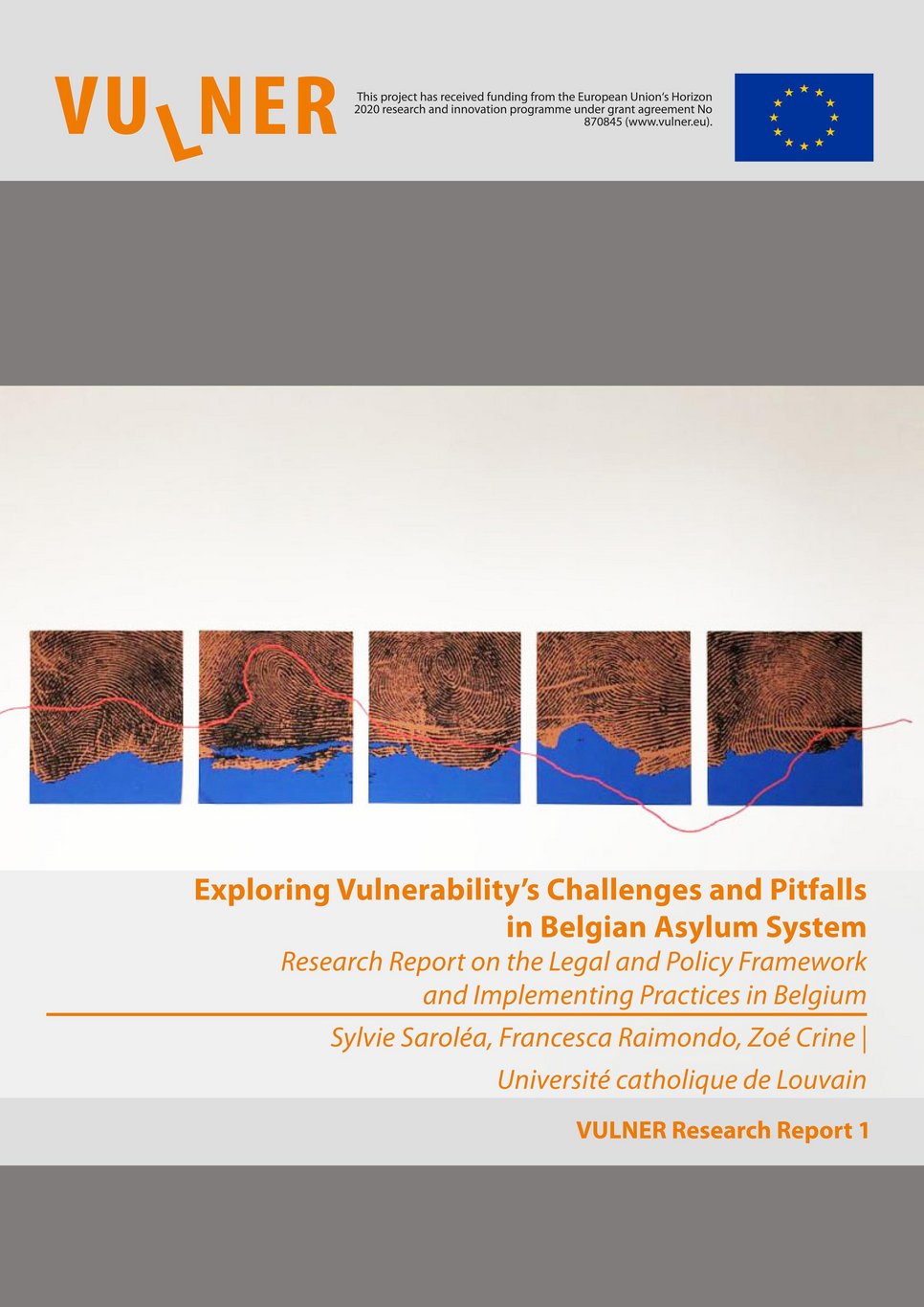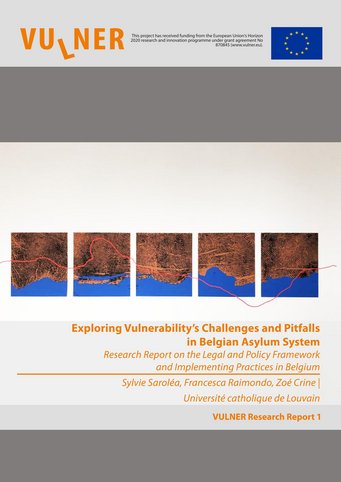Exploring Vulnerability’s Challenges and Pitfalls in Belgian Asylum System
Research Report on the Legal and Policy Framework and Implementing Practices in Belgium - by Sylvie Saroléa, Francesca Raimondo, Zoé Crine

This research report presents some of the intermediate research results of the VULNER project, based on the first phase of the project, which consisted of mapping out the vulnerability assessment mechanisms developed by state authorities in Belgium, including how they are implemented on the ground through the practices of the public servants in charge.
The following research questions are addressed: What do the relevant domestic legislation, case-law, policy documents, and administrative guidelines reveal about how “vulnerabilities” are being assessed and addressed in the countries under study? Do the relevant state and/or aid agencies have a legal duty to assess migrants’ vulnerabilities, and if yes, using which procedures, when and how? Following which legal and bureaucratic criteria? How do decision-makers (street-level bureaucrats) understand and perceive the ‘vulnerabilities’ of the migrants they meet on a daily basis? How do they address these ‘vulnerabilities’ through their everyday practices? What is their stance on existing legal requirements towards ‘vulnerable’ migrants? Which loopholes do they identify?
To that end, this report explores the asylum procedure in Belgium under the Aliens Act , the Reception Act and their implementing decrees, as well as the relevant guidelines and comments on national legislation from the UNHCR. It does so based on a legal analysis of these texts complemented with sixty interviews. The participants in the study were from the Special Unit for Minors and Victims of Human Trafficking (MINTEH) of the Aliens Office, the General Commissioner for Refugees and Stateless Persons (CGRS), the Aliens Litigation Council (CALL), the Labour Court, Fedasil, the Red Cross, Sürya (a specialised centre for victims of human trafficking) and a Local Reception Initiative (LRI). Therefore, civil servants, protection officers, judges and social workers were interviewed.
The legal research and the fieldwork have led to key findings, among which:
• the partial/uncomprehensive scope of the vulnerable groups identified in the law;
• the diversity of approach taken by the actors in the field;
• the lack of a (consistent) communication between the different authorities and actors involved in the Belgian protection system.
The findings reveal that the social workers on the ground favour a case-by-case approach in identifying the more vulnerable profiles among the protection seekers. This flexible approach leads both to a diffuse inclusive effect – applicants’ needs are prospectively taken into adequate consideration – but also to an exclusive effect. Indeed, the ample room for manoeuvre in the hands of the authorities and the absence of substantial guidelines could result in a real risk of highly discretional decisions.
In light of the study conducted in Belgium, identifying and addressing vulnerabilities departing from existing legal categories could prove problematic for three main reasons. Firstly, vulnerability is a multifaceted concept susceptible to change and develop over time and space. Therefore, it should not be assessed and addressed in a logic of presence/absence, but rather along layers and degrees of vulnerabilities. Secondly, the categories identified in the law are not ultimately comprehensive. There are some groups that are not taken into account – above all (isolated) man and young adults (those who have just turned eighteen) – as well as some factors that are relevant for vulnerability assessment. Among others, the most recurring and relevant factors identified are the socio-cultural and socio-economic background as well as the consequences of the migratory path, the complexities of the asylum procedure and the hardships of the life in the reception centres. Thirdly, the “management” of vulnerability seems to be calibrated in line with what the State can do in light of economic and human resources at disposal as well as its political priorities.
The results of the research also show the lack of (consistent) communication between the different actors involved in the asylum procedure that makes the process of identifying, assessing and addressing vulnerability fragmented and potentially ineffective in the long run. The rigid division of the tasks over the procedure and the distinct roles assigned to the different authorities and actors prevents common and fruitful channel of communication from being implemented. This leads to a lack of follow-up of vulnerable profiles throughout the procedure.
This report also shows that vulnerability does not carry the same consequences for the different asylum bodies, or sometimes any consequences at all. This results in a lack of effective consequences deriving from the notion of vulnerability on the ground, and also in the absence of consistency in the way it is assessed and considered within the procedure. The impact and role vulnerability can therefore remain very variable, with a large margin of appreciation for the decision-makers.
Download the full report here.
